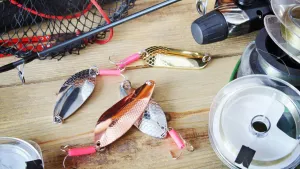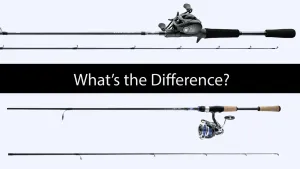Fishing with a spinning rod and reel can be incredibly fun, but it can also be intimidating for the beginner fisherman. Don’t worry though! With just four simple steps, you too can learn how to cast a spinning reel like a pro. There is nothing more rewarding than the feeling of mastering this simple technique and enjoying success out on the water - so let's get started by reviewing the basics of casting a spinning reel.
Understanding the Different Types of Casting Reels and Rods
As an angler, having the right fishing gear is essential to catching the biggest fish of the day. One of the most important components of fishing equipment is the casting fishing reel and fishing rod. With so many types of casting reels and rods available, it can be challenging to know which ones are best for your fishing needs.
Understanding the differences between baitcasting, spinning, and spincast reels and matching them with the correct rod can make all the difference in your fishing experience. By taking the time to educate yourself on the different types of casting reels and rods, you will be well-equipped to tackle any fishing challenge that comes your way.
Preparing to Cast a Spinning Reel - Setting up the Gear
Preparing to cast a spinning reel requires attention to detail and careful setup of the gear. First, select a fishing rod and fishing reel that match the size of the fish you plan to catch and the type of water you will be fishing in. Next, spool the spinning reel with line, making sure to use the appropriate pound test for your chosen fishing conditions.
Once the line is spooled, tie on a quality fishing lure or bait to attract your fish. Lastly, adjust the drag on your reel to ensure that the fish won't snap your line, but also allowing for some give so that you can reel in your catch successfully. By taking the time to properly set up your gear, you'll be ready to cast with ease and reel in some big catches.
Step-by-Step Guide to Cast a Spinning Reel
Casting a spinning reel is an essential skill for any angler. This technique allows you to place your bait or lure precisely where you want it in the water. To start, attach your chosen bait to the hook and adjust the drag on the reel.

Step 1 - Hold the fishing line with your index finger, open the bail with your opposite hand.
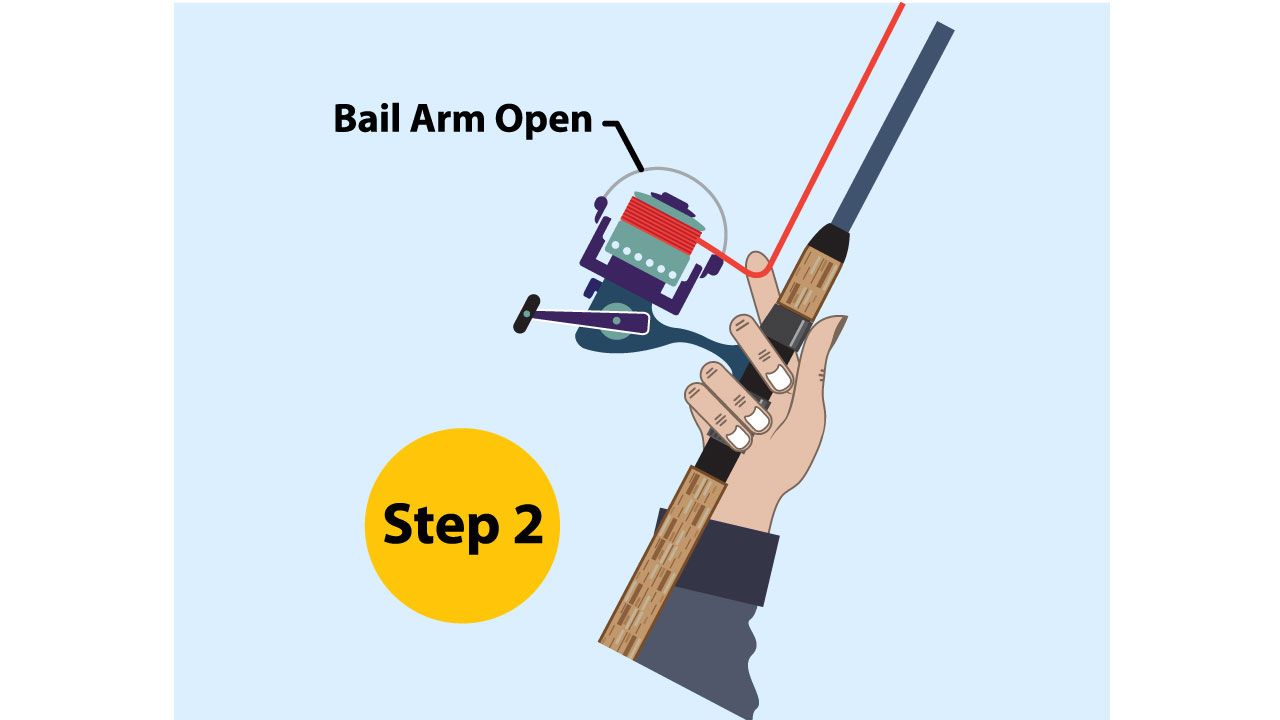
Step 2 - Begin swinging the rod backward.
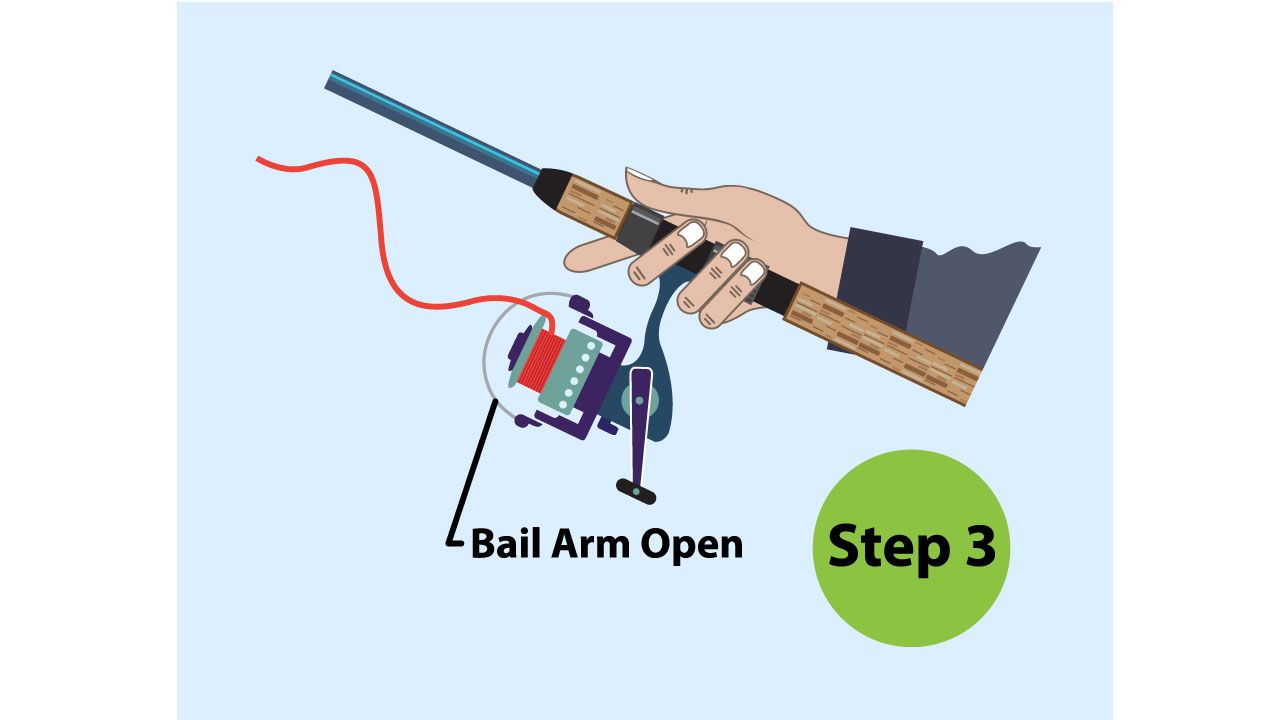
Step 3 - As you bring the rod forward, release the line with your finger, and let the bait fly out towards the water.
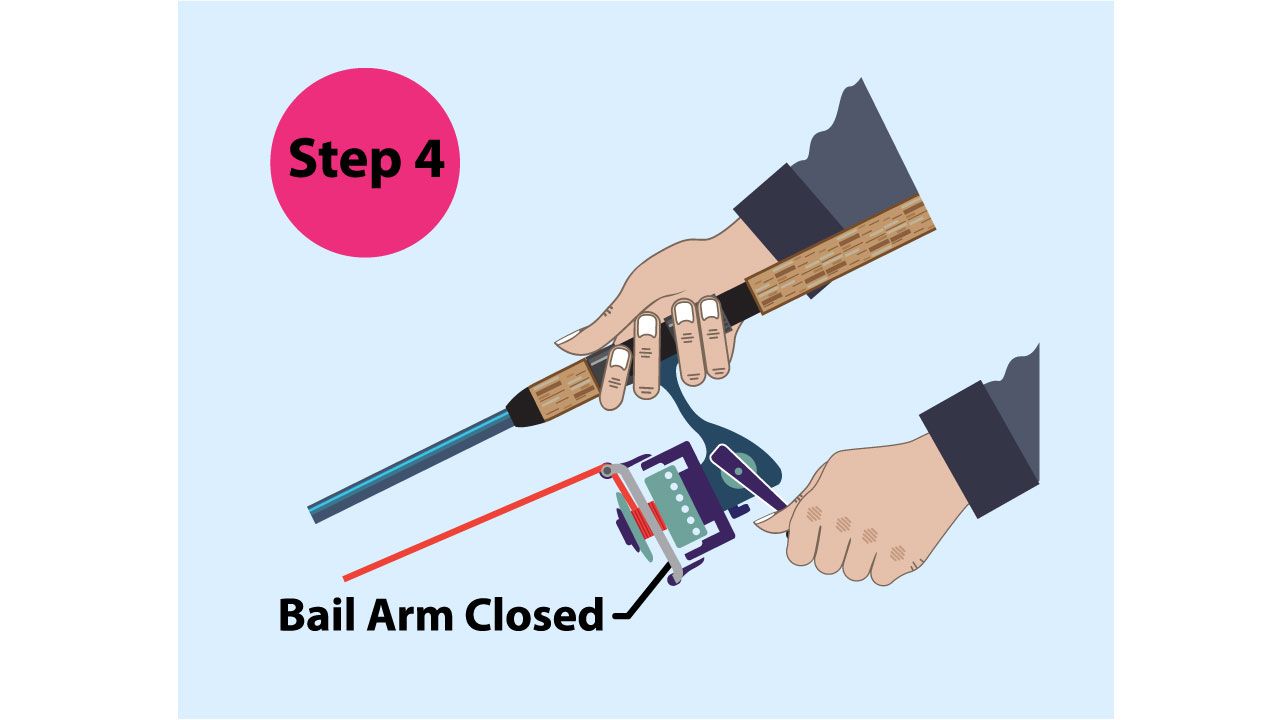
Step 4 - Close the bail.
It may take a few tries to perfect your spin cast, but with enough practice, you'll become an expert in no time. Not only will casting a spinning reel improve your fishing results, but it will also add another level of excitement to your outdoor adventures.
Common Mistakes You May Encounter When Casting a Spinning Reel
Fishing is a beloved pastime for so many people, an opportunity to enjoy nature and catch fish. Many anglers prefer to use a spinning reel for this activity due to its ease of use and versatility. However, even the most experienced fisherman can make mistakes when casting a spinning reel.
One common mistake is using the wrong line size. Using line that is too light or too heavy for the reel can result in poor casting distance or even line breakage. Another mistake is failing to properly set the drag. This can result in a lost catch or a damaged reel. All in all, while casting a spinning reel can seem straightforward, taking care to avoid these common mistakes can make for a more successful and enjoyable fishing experience.
Tips for Making Your Spin Casting Smooth and Accurate
Have you ever been out on the water and felt frustrated with your spin casting technique? Don't worry, you're not alone. Even experienced anglers can struggle with getting their casts to be both smooth and accurate. But with a few tips and tricks, you can improve your spin casting and start catching more fish.
First, make sure to use the right lure for the conditions you are fishing in. This can make a big difference in how your cast performs. Additionally, practice your casting technique regularly to build muscle memory and improve your accuracy. Finally, pay attention to your rod and reel setup to ensure it is properly balanced, which will make it easier to cast smoothly. By following these tips, you'll be on your way to mastering the art of spin casting in no time.
What to Do After You’ve Casted Your Spinning Reel
Once you've casted your spinning reel out and the line is in the water, what should you do next? This is a question that many novice anglers might be asking themselves. One answer is to be patient and wait for a fish to bite. But, there are other things you can do to increase your chances of catching a fish.
For example, you can slowly retrieve your line or even jig it up and down to entice a fish to come closer. It's also important to pay attention to your surroundings and any signs of fish activity, such as ripples or splashes. By remaining attentive and adaptable, you can enjoy a successful day on the water.
To summarize, casting a spinning rod with a spinning reel is not as complicated as it may first appear. After gaining some insight into the necessary equipment and techniques required to cast, it’s easy to see why spinning rodding has become so popular in freshwater and saltwater angling.
However, practice does make perfect. With plenty of patience and determination, one will soon be able to master all four steps of this particular fishing style – from picking the right gear to complete the cast in a smooth and accurate fashion as well as what needs to be done afterwards. Excelling in any hobby does not come naturally overnight, but with enough dedication and persistence, anyone can achieve great results through spin-casting.
FAQ Section
What are the benefits of using a spinning reel?
Spinning reels are one of the most popular types of fishing reel on the market. This is largely due to their versatility and ease-of-use for novice anglers. There are many advantages to using a spinning reel including:
- Spinning reels have more precise casting capabilities, which can be beneficial in certain situations such as fishing structures with hidden pockets or in deeper water where accuracy is essential. This can help you catch more fish and also save time by not having to constantly cast again and again.
- These reels tend to be lighter than other types of reels, making them comfortable for prolonged use and helping reduce fatigue and strain on the arms while out on extended fishing trips. The light weight also makes it easier to maneuver through tight spots where heavier models may be difficult or impossible to use effectively.
- You’ll find that spinning reels come with various gear ratios, allowing you to adjust your speeds depending on what type of fish you’re targeting—or even if you want a smooth reeling experience or quicker action between bites. They also typically feature larger line capacities than most conventional baitcasting reels, giving greater control when battling hard fighting species like tuna or marlin that require powerful gear.
- Finally, spinning rods present virtually no backlash issues since they don’t use centrifugal force like baitcasters do when releasing line during a cast (also known as “bird nesting”). That means fewer tangles and frustration trying untangle lines while still enjoying fast distances while casting lures or baits into spots far from shorelines!
How do I choose the right spinning reel for my fishing needs?
Choosing the right spinning reel for your fishing needs can be a daunting task, but with some careful research and consideration of your preferences, you can find the perfect reel.
When choosing a spinning reel, consider what type of fish you intend on catching and the size and weight of lure or bait to be used. A good rule to follow is that larger fish require heavier tackle, so an appropriate size reel should be chosen accordingly.
For smaller fish, a light or ultralight spinning rod is generally suitable while heavier fishing rods are better for larger gamefish such as salmon or steelhead trout. It's also important to match line weight and other components like drag force with your intended quarry – for instance, it’s best not to use heavy lines on small species such as panfish because they risk being overmatched by bigger lures.
Another factor in determining which type of spinning reel would work best is body-style preference; different bodies provide different advantages depending upon where you will be fishing - open faced reels are lightweight whereas closed face models offer total protection from elements when moving between locations.
Furthermore certain features may add greater convenience; items like anti-reverse handles and gear ratios contribute differently according to fishing needs – so if ease-of-use matters most determine whether these factors are available in the model preferred before committing to purchase it.
Finally after selecting an appropriate option based on budget and specifications examine all parts for excessive wear: check screws (should not turn too easily), bearings (smooth rotation), handle knobs (no looseness) etc.. Once fully comfortable with condition/feature set choose one final component - color! It might seem trivial but color affects feel when holding a item in hand so making this selection carefully can go a long way towards developing confidence in its use out on water!
How do I maintain my spinning reel to keep it in good condition?
Maintaining your spinning reel is one of the most important aspects of keeping it in good condition. Here are a few tips on how to do this:
- Lubricate Your Reel - Keeping your reel well lubricated is essential for its longevity. Use light, all-purpose grease or oil on the bearings, spool, and bail arm before you begin fishing each season.
- Regular Maintenance - Once a year at least (and more often if you use it frequently), take apart and thoroughly clean your reel with warm water and mild detergent or soap. This will ensure that any dirt, sand or salt doesn’t build up over time while also allowing you to check for any worn parts that may need replacing.
- Replace the Line - Generally speaking, it’s recommended that you replace your line every 2-3 years as it can become brittle and weak overtime due to exposure to sunlight and other elements of weathering which can damage the strength of its fibers rendering them less effective when used for casting or fighting fish off line resistance from current flow etcetera..
- Rinse After Use – Whenever possible rinse off your reel after use with freshwater from a hosepipe because saltwater contains corrosive minerals that can damage metal components over time causing them to rust or corrode leading potentially lead breakages due to weakened components making them harder accelerate wear tear much faster than normal conditions would cause them too should they not be properly maintained along with other factors such as proper storage as outlined above in point one!
What are some of the best spinning reel brands on the market?
When it comes to choosing the best spinning reel brands on the market, there are numerous factors to consider. Many fishermen opt for a balance between quality and budget when selecting their fishing equipment, so exploring all options is key.
One of the most popular choices among anglers is Shimano and it’s no wonder why. Known for their durability and performance, Shimano reels are often noted as being highly reliable and easily upgradable in terms of maintenance and features.
The different series have various drag ranges depending on what you’re looking for, which offers some nice variety for any angler. Not only that but those who choose this brand can look forward to reels that boast comfortable designs along with smooth retrieves with minimal friction – something essential when bringing in large fish!
Another great option is Daiwa, a Japanese company known worldwide for producing well-built reels backed by an impressive warranty policy that makes them even more enticing. Their lineup often contains lower prices than many other top brands yet don't sacrifice on quality or performance ― proof that you don't always need to spend big bucks if you want durable spinning gear! Not only do they use computerized engineering processes but also extensive testing procedures before releasing each model into the market; ensuring users get reliable products each time they purchase one from them.
Finally, Penn Reels bring strong performance ratings along with long lasting construction — something any experienced fisherman looks out for when shopping around! With years of experience under their belt combined with solid warranties offered across different models you'll find here at Penn (that include both free parts replacements/repairs), these products make a great addition to anyone's tackle box — particularly if casting distance or powerful retrieves are important requirements during your fishing trips!
Looking for a new spinning reel, check out our best spinning reels for walleyes.


